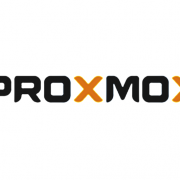In it’s most simplistic definition, open source software is a free program that is created or maintained by groups of people, such as volunteer programmers. Those that work on it can freely read, redistribute, and modify the source code. Open source software is high quality, low cost (usually free), flexible and independent software for all businesses. Below are the many criterias associated with open source software that supports rapid evolution.
- Redistribution of the software is free – This restrain people from developing the software for their own short-term capital gains. It also encourages long-term initiatives, which focuses on the quality and functionality of the software.
- Source code is freely available – Making the source code easily and freely available would allow quick modifications and enhancements to the program.
- License must allow modifications and derived works – This allows people to redistribute their work in order to advance its evolution.
- Integrity of the Author’s source code – Modifications must be provided on a patch model so changes are readily distinguished from the base source.
- No discrimination against persons, groups, or fields of endeavor – This stimulates a diverse community to participate as well as business entities and others.
- No additional License needed and license must not be specific to product. – Prevents closing up software by preventing such conditions as a non-disclosure agreement.
- License must not restrict other software or technologies – Allow distributors to use and package the code in conjunction with other existing or perferred application / environment / technology.
Benefits of Open Source Software for Small to Medium-sized businesses
For today’s businesses, the most important factors in determining what software program to use are: functionality, compatibility, cost, and customizability. Fortunately, open source software addresses all these criterias. The value derived from software that is lean (no unecessary functionalities), standardized, cost effective, and customizable is tremendous. Aside from the obvious direct cost savings, open source software also improves efficiency. Also, the frequent updates and improvements to the software offers quick solutions to problems that may arise and features that will be needed in the future. Lastly, the ability to rewrite the code specifically for your business enpowers your business work flow.

